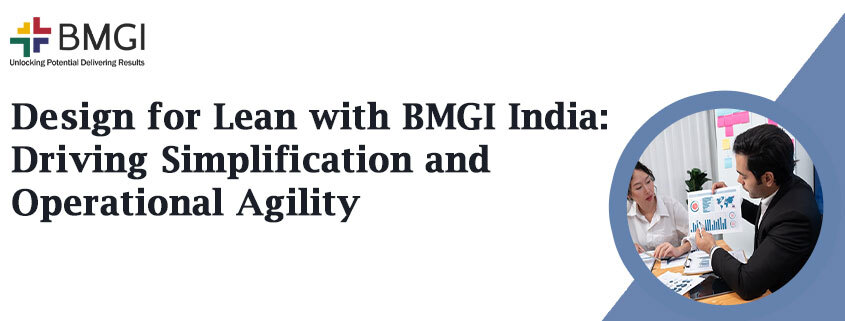In many organizations, inefficiencies are not just discovered during operations—they are engineered into the system from the outset. Whether it's a factory layout that requires excessive material movement or a business process that builds in delays through unnecessary handoffs, these issues often originate at the design stage. Design for Lean offers a way to prevent such inefficiencies by embedding Lean thinking into the creation of systems, workflows, and processes.
BMGI India applies this methodology to help businesses develop systems that are inherently efficient, adaptable, and aligned with operational goals—right from the beginning.
Understanding Design for Lean
Design for Lean is a forward-looking approach focused on eliminating waste before it ever enters the process. It involves aligning the design of processes, facilities, and products with Lean principles, ensuring that value flows smoothly to the customer with minimal interruption or waste.
Instead of retrofitting fixes to poor processes, Design for Lean helps create streamlined, scalable systems from the start. BMGI India enables this shift by working closely with cross-functional teams to bring both strategic alignment and operational precision to the design process.
Key Principles Driving Lean-Based Design
1. Prioritize Flow Efficiency
Processes are structured for minimal delays and uninterrupted progression, reducing wait times, excess inventory, and unnecessary motion.
2. Prevent Waste at the Design Stage
The focus is on identifying and eliminating non-value-added steps—such as redundant approvals, overprocessing, and space-consuming layouts—before implementation.
3. Enable Cross-Functional Collaboration
BMGI India engages stakeholders from operations, engineering, quality, and planning to ensure that designs are practical, efficient, and future-ready.
4. Design for Scalability and Flexibility
Processes and systems are created to be robust under varying conditions and easy to adapt as needs evolve.
Tools and Techniques Commonly Used
- Value Stream Mapping (VSM) to visualize end-to-end process flow
- 5S and visual workplace tools to structure work environments
- Spaghetti diagrams to optimize layout and reduce travel
- Design simulations to test and refine process designs before implementation
- Lean scorecards to assess alignment with performance goals
Applications Across Industries
Design for Lean is highly adaptable and used in:
- Manufacturing: Line balancing, cell design, and setup reduction
- Healthcare: Designing patient flow to reduce waiting times
- Warehousing and logistics: Improving picking paths and storage layouts
- Service processes: Streamlining administrative workflows and approval chains
BMGI India tailors these techniques to the sector-specific realities of its clients, ensuring that designs deliver long-term operational benefits.
Impact of Designing with Lean Principles
Organizations that apply Design for Lean consistently report:
- Improved productivity and shorter cycle times
- Better layout utilization and resource efficiency
- Reduction in rework and operational friction
- Easier onboarding and faster process standardization
- Enhanced customer value with fewer system constraints
These improvements not only lead to immediate gains but also set the foundation for sustained operational excellence.
Conclusion
Design for Lean represents a proactive approach to performance improvement—one that avoids building waste into systems in the first place. By applying Lean thinking at the design stage, BMGI India helps organizations move beyond reactive fixes and toward resilient, high-performing operations.
The outcome is not just improved efficiency, but smarter systems that are simpler to manage, easier to scale, and consistently aligned with business goals.





Comments